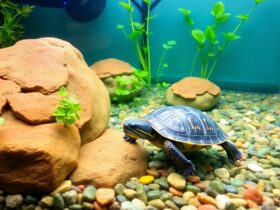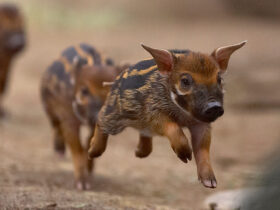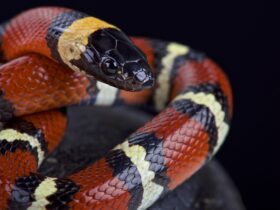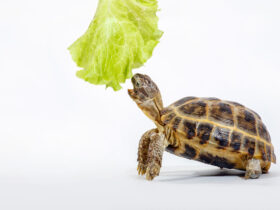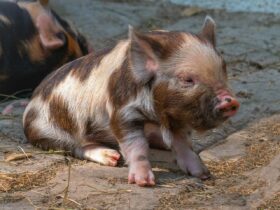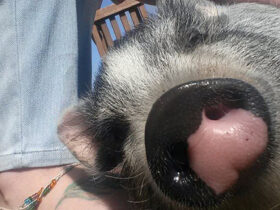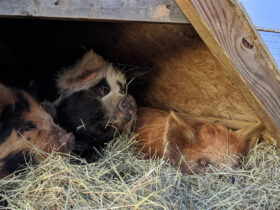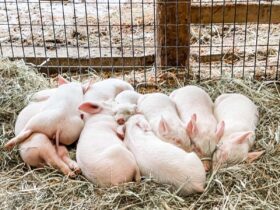Ever wondered about the different colors mini pigs come in? It’s pretty interesting, actually. These little guys can have a whole range of colors, from common ones like black and white to some really unique patterns. If you’re thinking about getting a mini pig or just curious, knowing about their colors can be fun and helpful. Let’s dive into the world of mini pig colors and see what makes each one special.
Common Mini Pig Colors
Mini pigs come in a delightful range of colors, each with its own charm. Let’s explore some of the most common hues you’ll find in these adorable animals.
Black and White Patterns
One of the most striking color combinations in mini pigs is the classic black and white pattern. This pattern can vary from pig to pig, with some sporting bold patches while others have a more marbled appearance. The contrast between black and white gives each pig a unique look, making them a favorite among pig enthusiasts. These patterns can sometimes resemble those seen in cows or pandas, adding to their appeal.
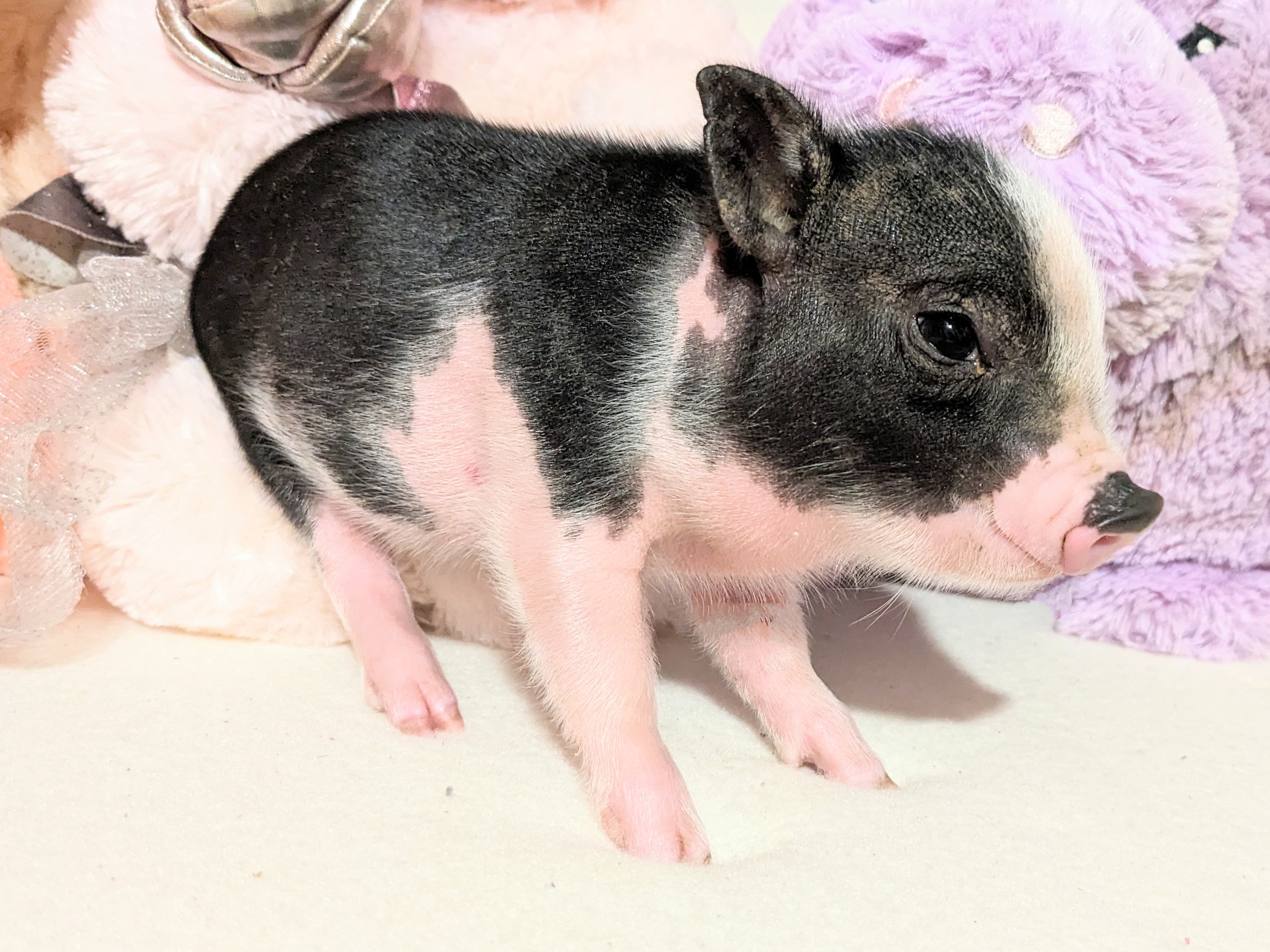
Solid Black Mini Pigs
Solid black mini pigs are another common sight. These pigs boast a sleek, uniform color that can appear shiny and smooth. The solid black color is often associated with a more traditional pig appearance, and it tends to highlight the pig’s features, such as their expressive eyes and snout. Solid black pigs are often perceived as being more robust and sturdy.
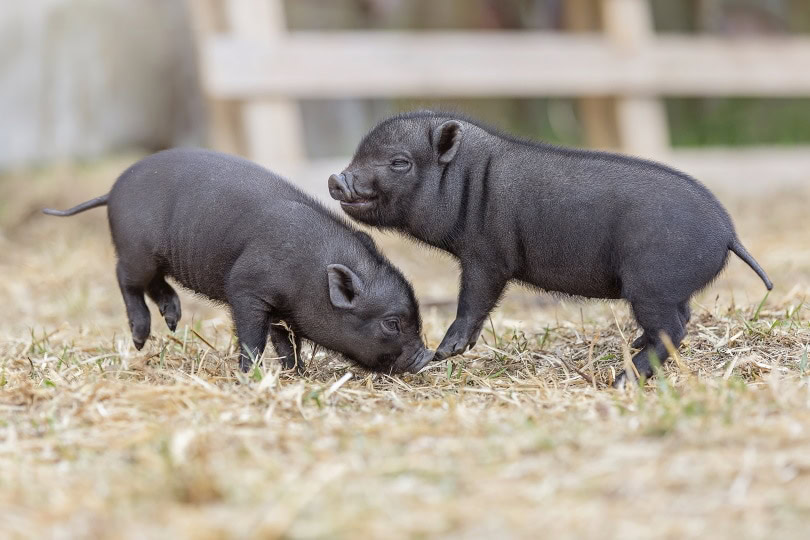
Gray and Silver Shades
Gray and silver mini pigs offer a more subtle, but equally captivating, color option. These shades can range from light silver to a deep charcoal gray. Gray and silver pigs often have a soft, velvety look, which adds to their gentle and approachable personality. These colors can sometimes change slightly with age, giving them a dynamic appearance over time.
Mini pigs, regardless of their color, require proper care and attention to thrive. They typically live 12 to 18 years with the right care, including a balanced diet, exercise, and regular veterinary checkups. It’s important to avoid overfeeding and to provide mental enrichment to ensure a long, healthy life. Remember, the term “teacup” pigs can be misleading, as it often refers to inbred or malnourished pigs, which can lead to health issues. Learn more about mini pig care.
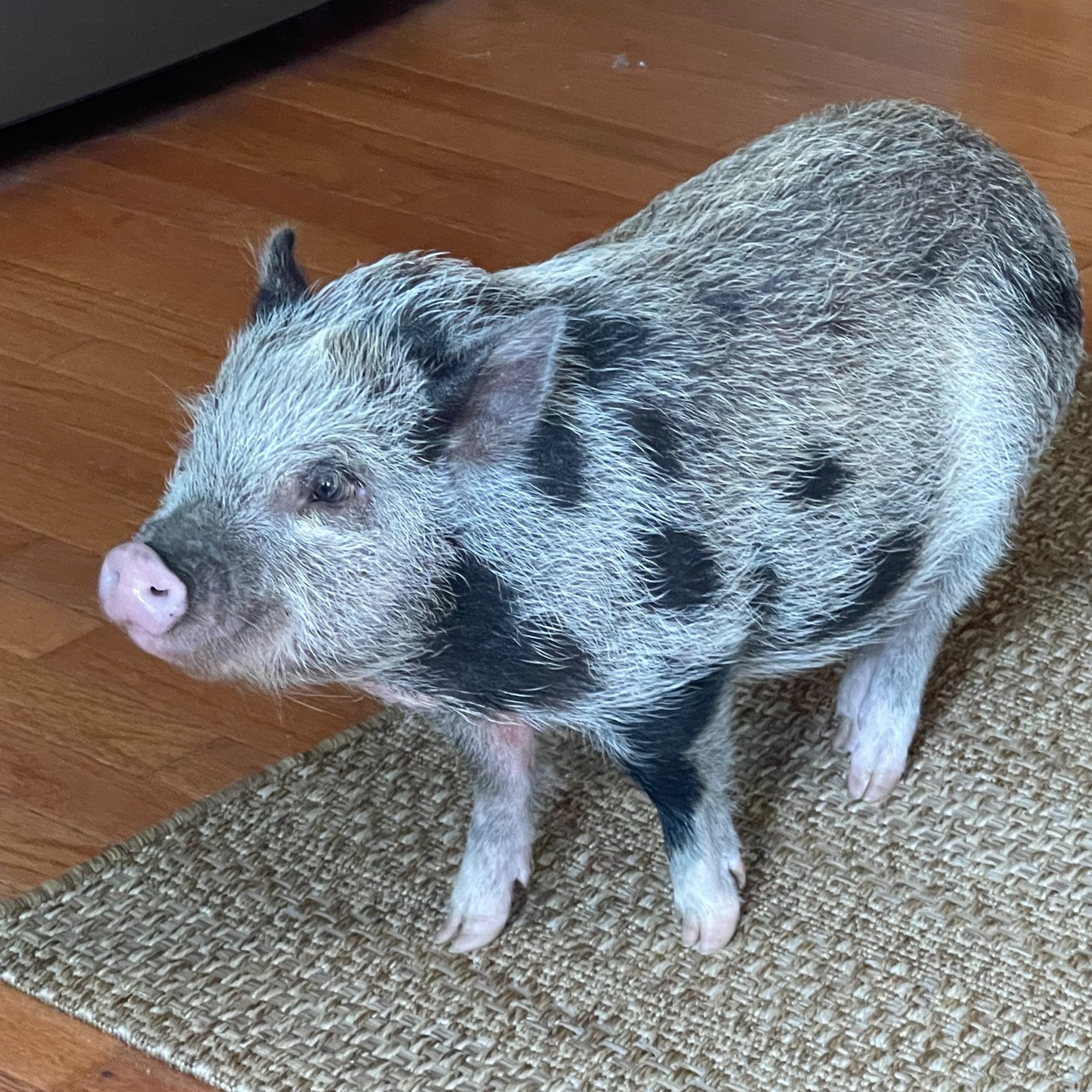
Unique and Rare Mini Pig Colors
Spotted Mini Pigs
Spotted mini pigs are quite the sight. These pigs boast a mix of colors, creating a patchwork that’s as unique as a fingerprint. Each spot is like a snowflake—no two are exactly alike. Some have large patches, while others are speckled all over. This pattern is not just for looks; it often plays a role in their popularity among pig enthusiasts.
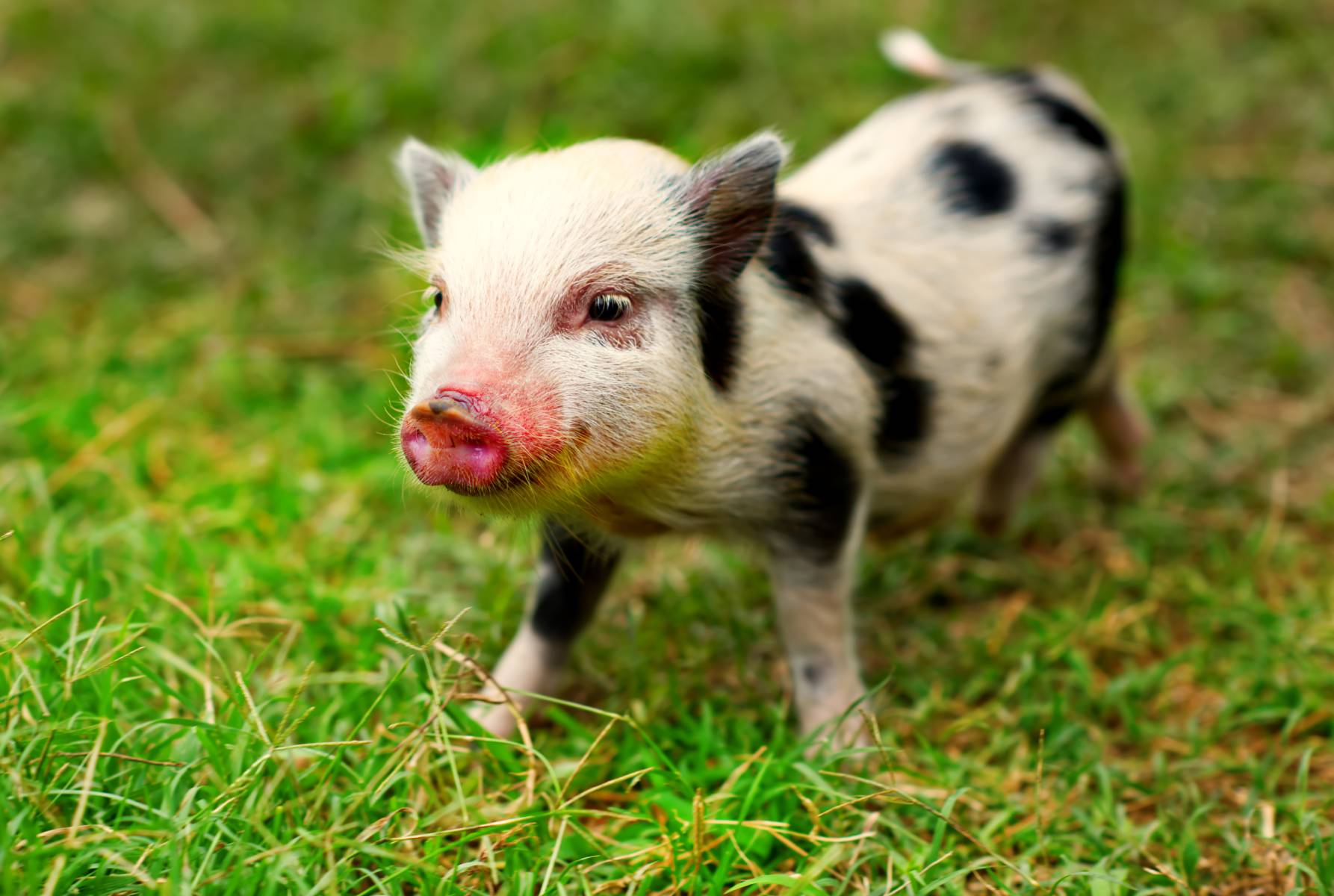
Brindle Patterns
Brindle mini pigs are a rare find. They showcase a striped or streaked pattern that resembles the coat of a brindle dog. This pattern is a result of a genetic twist, making these pigs stand out in any herd. The brindle effect can range from subtle hints to bold, contrasting stripes, often mixing shades of brown, black, and gray.
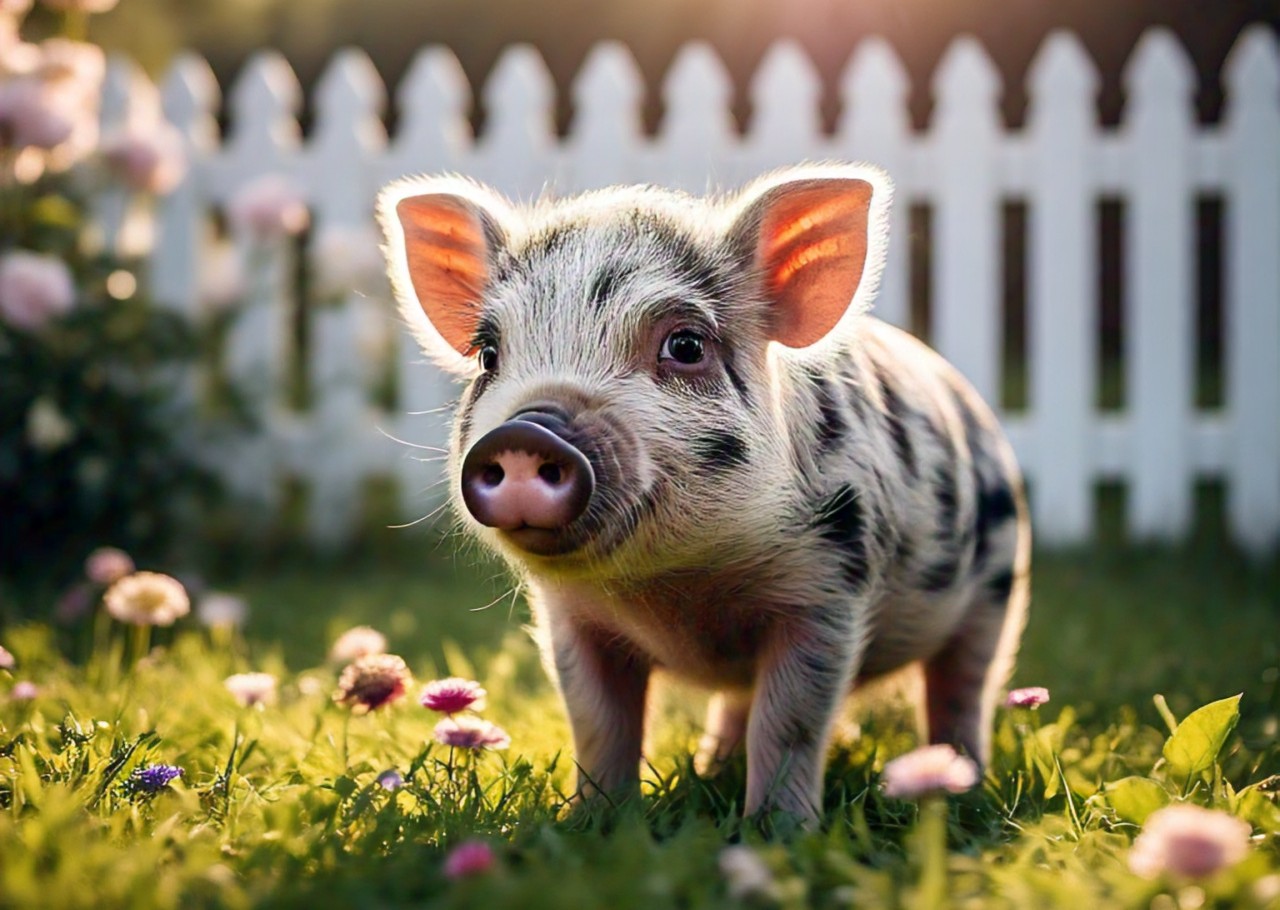
Tri-Color Combinations
Tri-color mini pigs are the showstoppers of the pig world. With three distinct colors in their coat, they offer a vibrant display of nature’s palette. These pigs might have a base color with patches or streaks of two other colors, creating a striking visual effect. The combination of colors can vary greatly, making each pig truly one-of-a-kind.
Owning a mini pig with a rare color pattern is like having a living piece of art. Their unique appearances not only capture attention but also spark conversations about the fascinating world of mini pigs.
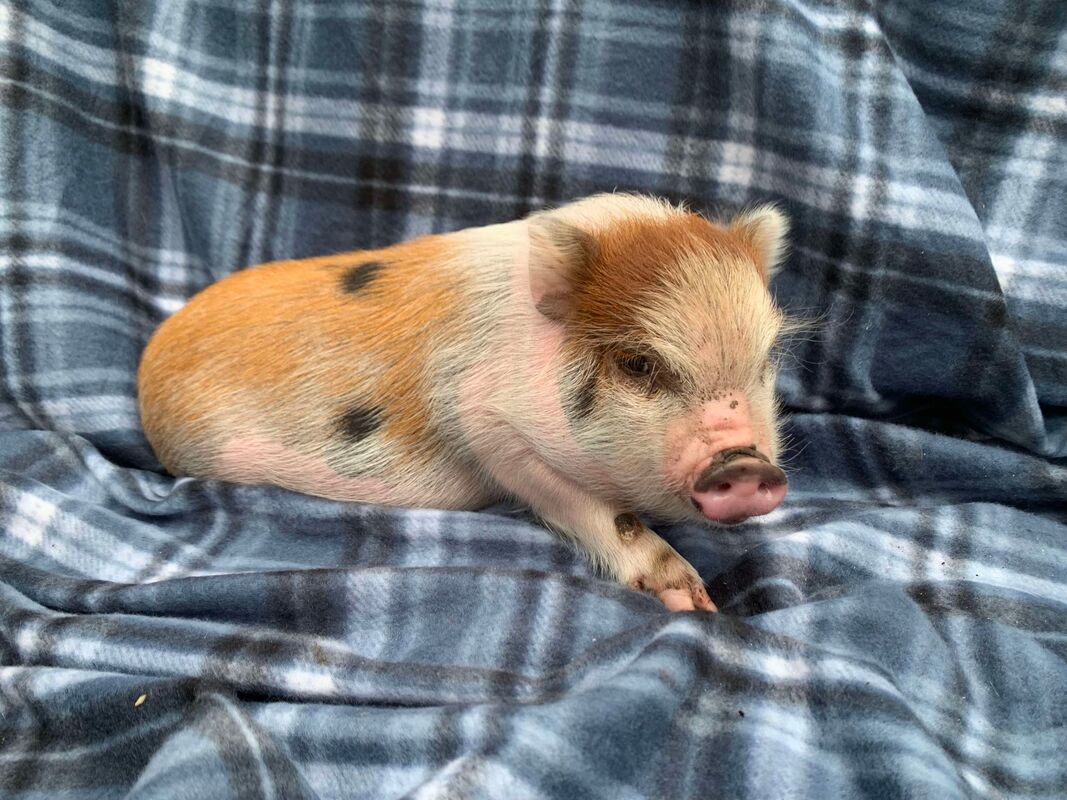
Factors Influencing Mini Pig Colors
Genetic Influences on Pigmentation
Genetics play a big role in determining the color of mini pigs. Just like in humans, certain genes are responsible for the pigmentation in their skin and hair. These genes can lead to a variety of colors and patterns, from solid colors to intricate patterns. Dominant genes often result in more common colors, while recessive genes can produce unique shades that are less frequently seen. Breeding practices can emphasize certain color traits, but it’s important to remember that genetics can be unpredictable.
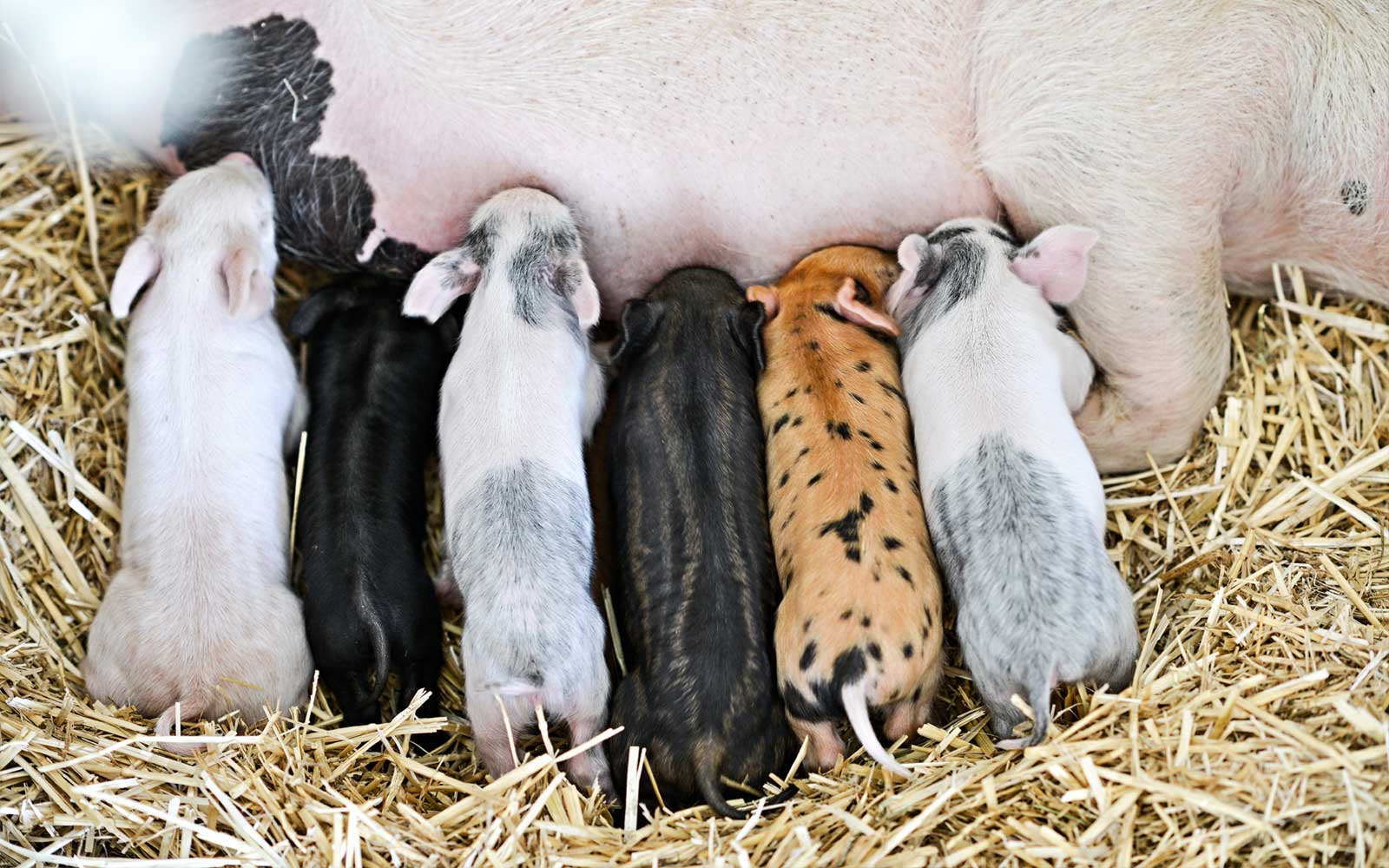
Environmental Factors Affecting Color
The environment where a mini pig lives can also affect its color. Sun exposure is a big factor; pigs that spend a lot of time outdoors may develop darker skin due to sun tanning, similar to how humans tan. On the flip side, pigs that are mostly indoors might have lighter skin. Diet also plays a role. A balanced diet with the right nutrients can help maintain a healthy coat and skin. If you’re considering what to feed your mini pig, it’s essential to provide a balanced diet that supports their overall health and well-being.
Age-Related Color Changes
As mini pigs age, their colors can change. Piglets might be born with one color, only to develop a different shade or pattern as they grow. This is a normal part of their development. Some pigs may even go through several color changes throughout their life. It’s always a bit of a surprise to see how a pig’s color evolves over time. These changes can be gradual, so you might not notice them immediately, but over months or years, the differences can be quite noticeable.
Watching a mini pig’s color evolve over time can be a fascinating experience. It’s a reminder of the natural changes that occur in life, much like watching the seasons change. Each pig is unique, and their colors tell a story of their genetic makeup and life experiences.
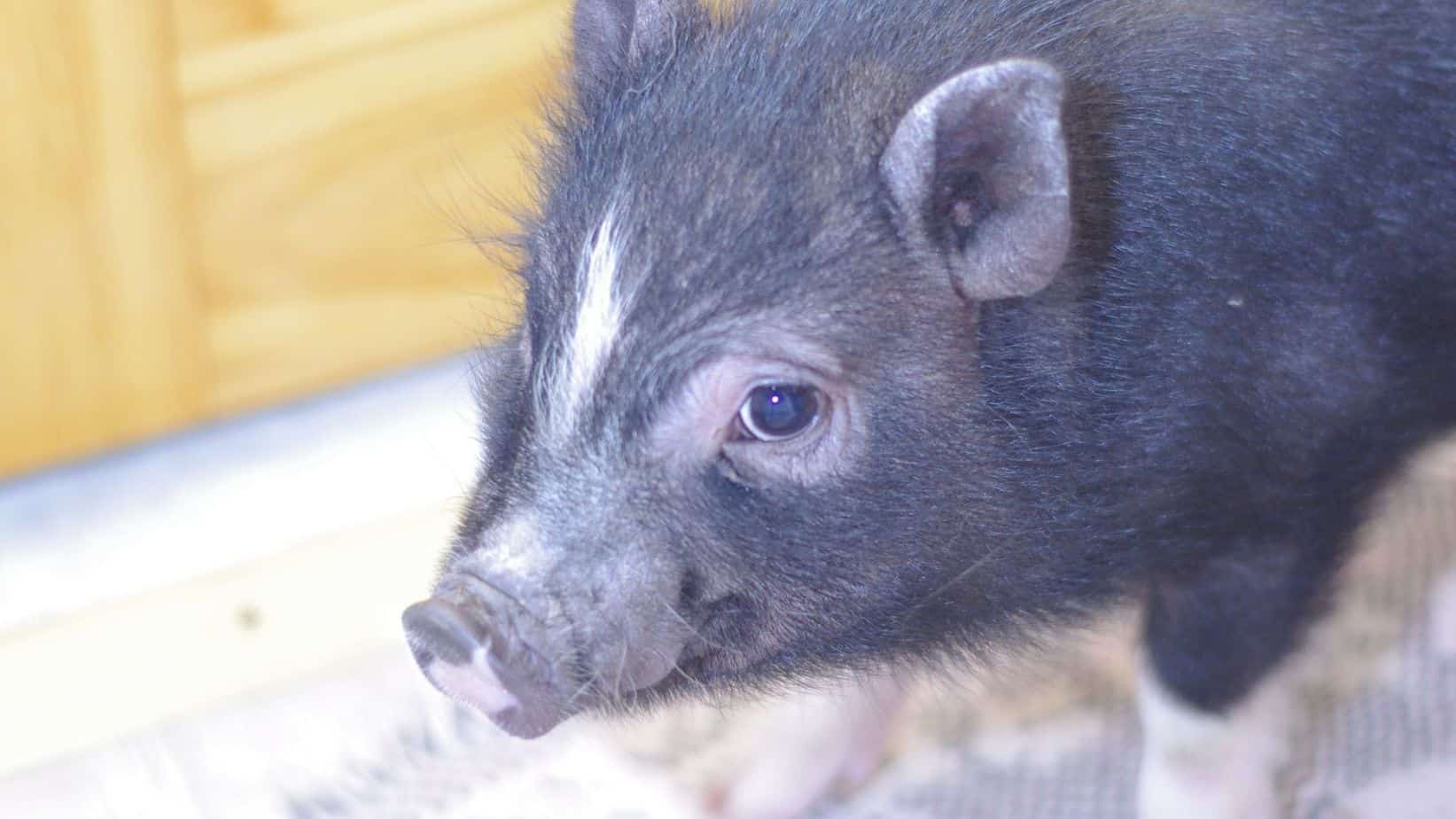
Mini Pig Color Variations by Breed
Juliana Pig Color Traits
Juliana pigs are often celebrated for their striking color patterns. These little pigs usually have a base color of white or silver, accented with spots of black or gray. This pattern gives them a unique and attractive appearance. Their color is not just for looks; it can also be a clue to their health and genetics. When considering a Juliana pig, it’s important to note that their spots can change slightly as they age, adding to their charm.

KuneKune Pig Color Patterns
KuneKune pigs, originating from New Zealand, are known for their diverse color range. They can be found in shades of black, ginger, cream, and even tri-color combinations. Interestingly, these pigs often have a mottled or patchy appearance, which is quite distinct. Owners often choose KuneKune pigs not just for their friendly temperament but also for their beautiful coats.
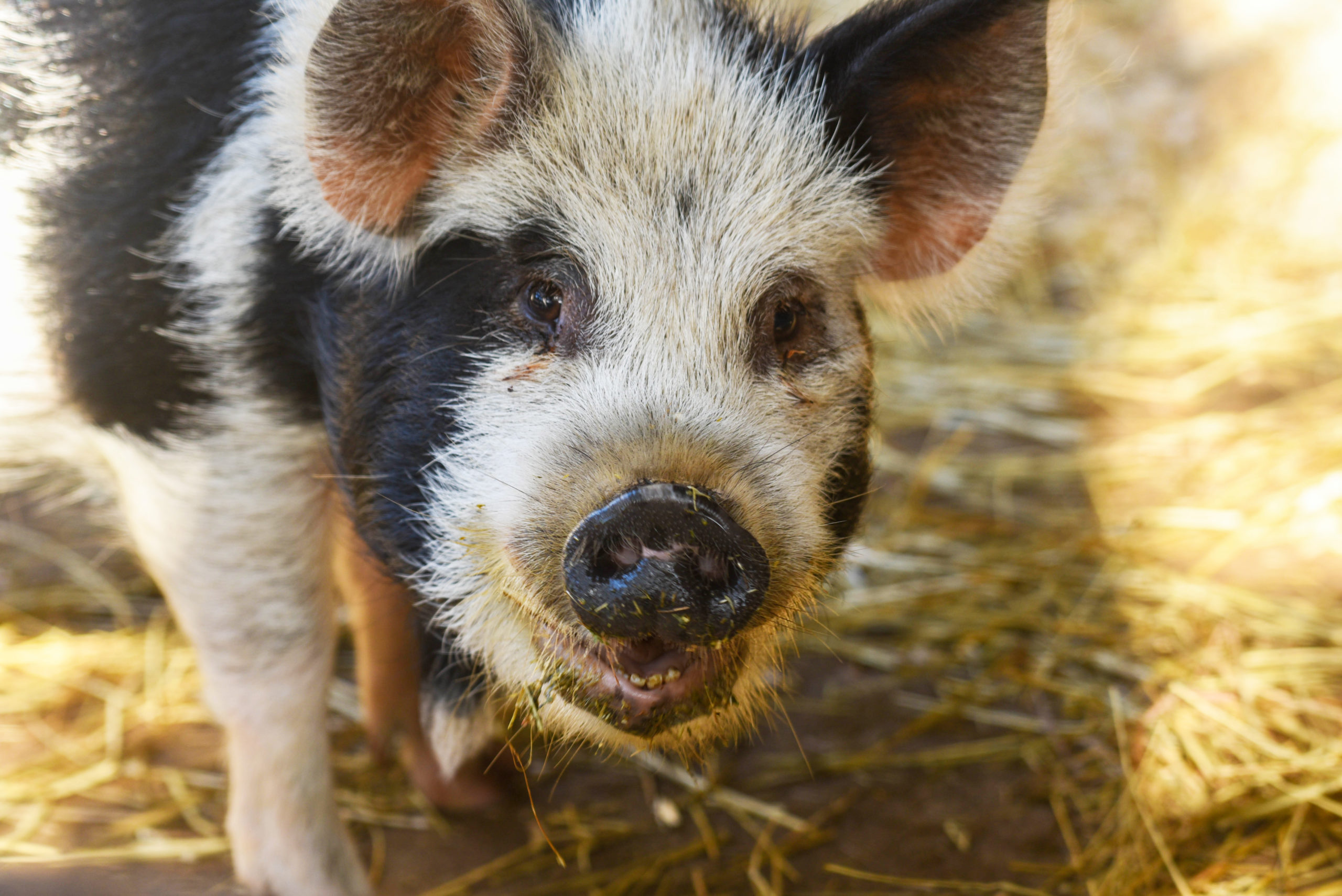
Potbelly Pig Color Characteristics
Potbelly pigs are perhaps the most recognized mini pig breed, and their colors vary widely. Typically, they come in solid colors like black, white, and gray, but you can also find them in mixes of these shades. A notable feature is their skin, which can be sensitive to sunburn, especially in lighter-colored pigs. This means that owners need to be mindful of their pig’s exposure to the sun and provide suitable protection. Potbelly pigs are not only known for their color variations but also for their affectionate nature, making them popular pets.
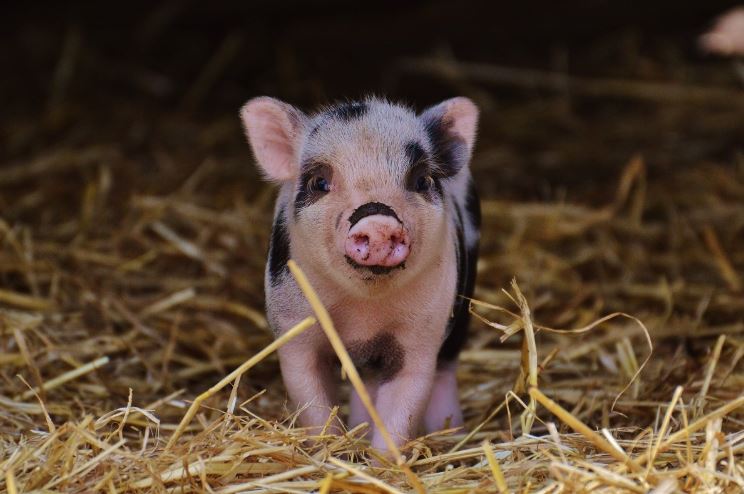
Caring for Mini Pigs Based on Color
Skin Care for Light-Colored Pigs
Light-colored mini pigs often have more sensitive skin compared to their darker counterparts. It’s essential to keep their skin moisturized to prevent dryness and irritation. Regularly check for signs of sunburn, especially if they spend a lot of time outdoors. Using gentle, hypoallergenic products can help maintain their skin health. Consider setting up a shaded area in their outdoor space to provide them some relief from direct sunlight.
Sun Protection for Darker Pigs
Darker pigs have a natural advantage when it comes to sun protection, but that doesn’t mean they’re immune to the sun’s rays. It’s a good idea to apply sunscreen to areas with less fur coverage, like the ears and snout. Regular sun exposure can lead to skin damage over time, so providing shaded areas is still important. Keep an eye out for any unusual changes in their skin, as these could indicate sun-related issues.
Grooming Tips for Spotted Pigs
Spotted pigs are unique and require a bit of special attention when it comes to grooming. Their spots can sometimes be more prone to dryness or flakiness, so moisturizing is key. Grooming tips for mini pigs suggest using gentle products and limited bathing to maintain their coat health. Try to make grooming a regular routine, as it not only keeps their coat in top condition but also strengthens the bond between you and your mini pig. Remember to be patient and use positive reinforcement during grooming sessions to make it a positive experience for both of you.
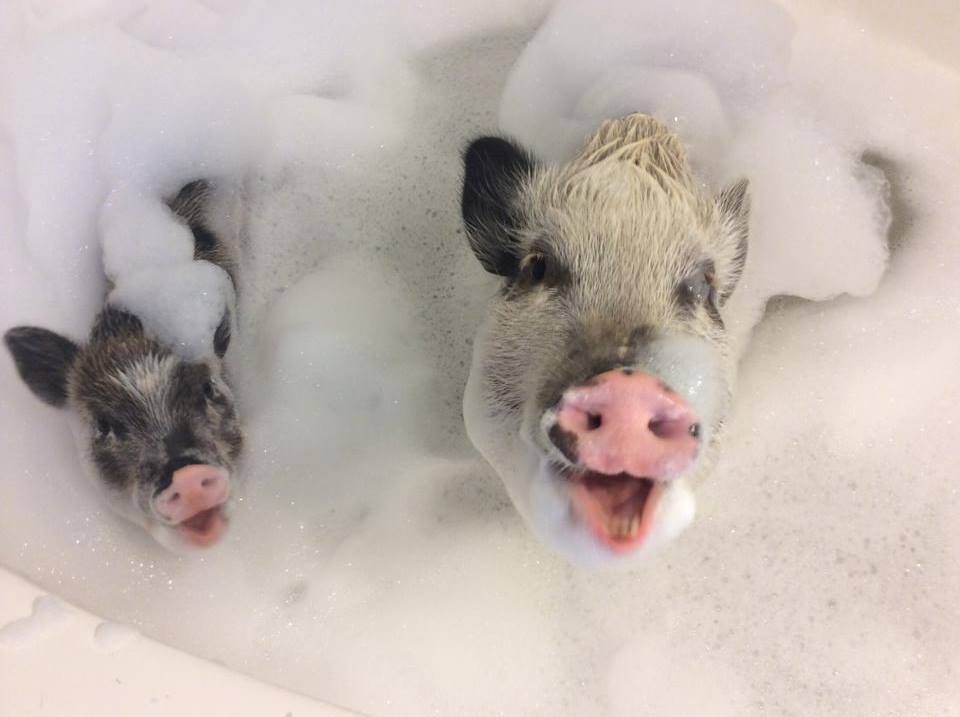
Mini Pig Colors and Their Popularity
Trends in Mini Pig Color Preferences
Mini pig colors have seen various trends over the years. Some colors become popular due to their unique appearance or because they are perceived as more exotic. For instance, pigs with black and white patterns often capture the hearts of many due to their striking contrast. Meanwhile, solid colors like black or white can be seen as classic and elegant choices. The demand for certain colors can also be influenced by social media, where particular hues might become trendy due to influencers showcasing their adorable pets.
Color and Personality Perceptions
Interestingly, color can sometimes affect how people perceive a mini pig’s personality. While there’s no scientific basis for this, many believe that certain colors might indicate specific traits. For example, a spotted mini pig might be seen as playful or mischievous, while a solid black pig could be viewed as more serious or mysterious. These perceptions can often play a role in a potential owner’s choice when selecting their pet.
Choosing a Mini Pig Based on Color
When choosing a mini pig, color is just one of the many factors to consider. While some people might prioritize finding a pig with a unique or rare color, it’s important to remember that temperament and health are crucial too. Prospective owners should consider the pig’s overall well-being and how it fits into their lifestyle.
“Mini pigs are not just pets; they’re companions with distinct personalities and needs. Their color might catch your eye, but their temperament will capture your heart.” Understanding their social behavior is key to building a strong bond with these charming animals.
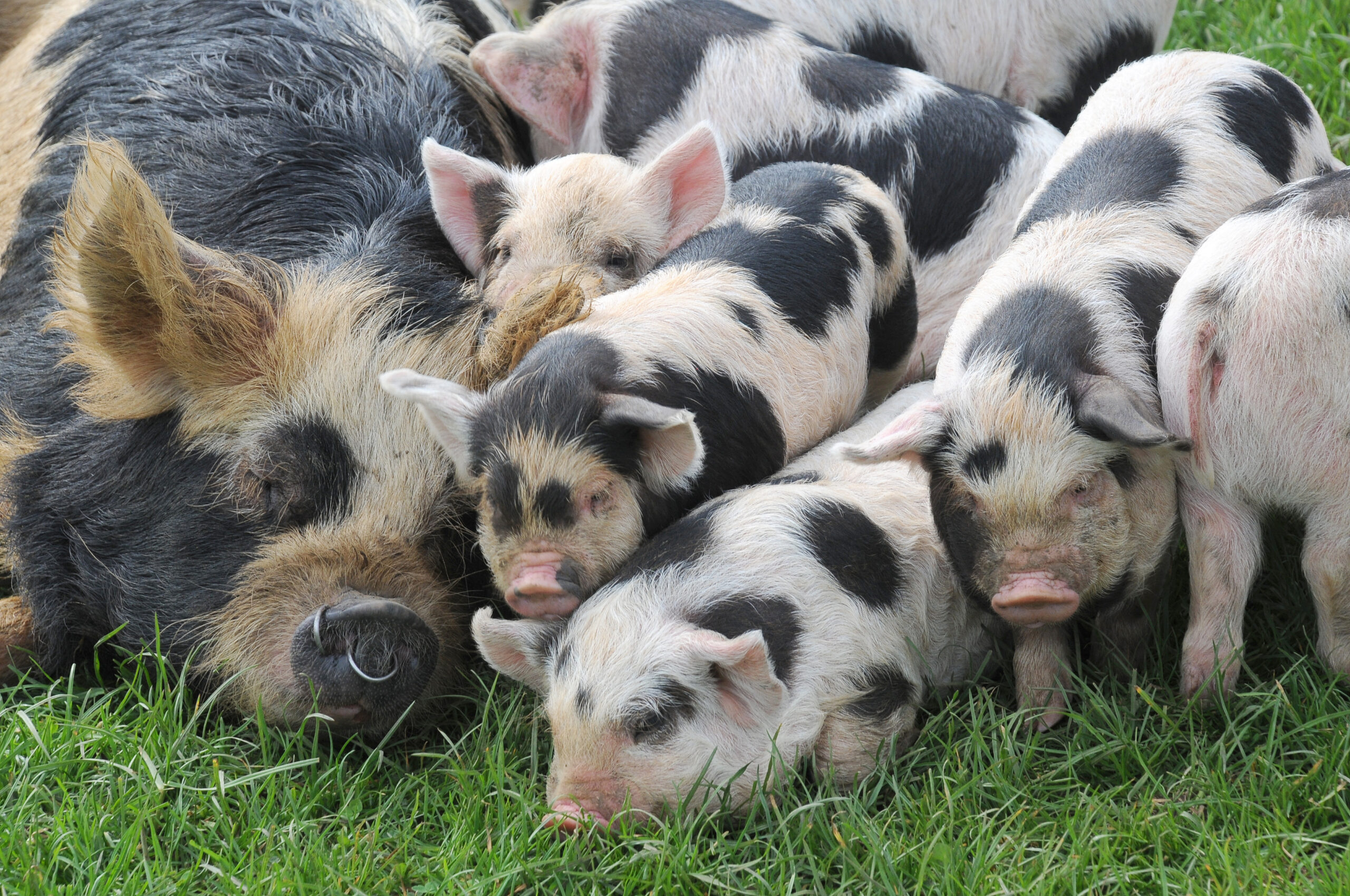
Understanding Mini Pig Color Genetics
Dominant and Recessive Color Genes
When it comes to mini pig colors, genetics play a huge role. Dominant genes often dictate the more common color patterns you see, like solid black or black and white combinations. On the flip side, recessive genes can lead to unique hues, such as spotted or brindle patterns. It’s kind of like a genetic lottery; you never quite know what you’re going to get. These genetics are not only fascinating but also essential for breeders aiming to predict potential color outcomes in piglets.
Breeding for Specific Colors
Breeding mini pigs for certain colors is both an art and a science. Breeders often select pigs with specific traits to increase the chances of getting a desired color. For example, if you’re aiming for a rare tri-color pig, you might pair pigs with a history of producing such patterns. However, it’s important to remember that genetics can be unpredictable. Breeding isn’t just about color either; it’s about ensuring the overall health and temperament of the pig.
Color Inheritance Patterns
Understanding how color is passed down is key for breeders. Mini pigs inherit their color from both parents, with a mix of dominant and recessive genes at play. Here’s a simple breakdown of how this might look:
- Dominant Color Genes: These are more likely to be expressed in the piglet’s coat.
- Recessive Color Genes: These require both parents to carry the gene for the color to appear.
- Mixed Patterns: Sometimes, a piglet might inherit a blend, leading to unique and unexpected patterns.
Breeding mini pigs is a bit like a genetic puzzle. You have to consider both the visible traits and the hidden genetic factors that might influence the outcome.
For those interested in mini pigs as pets, it’s important to understand these genetic factors. Mini pigs are intelligent pets that require proper training, nutrition, and care for a healthy life. Training should start early, focusing on basic commands and socialization to prevent aggression. They typically weigh between 75 and 150 pounds, debunking myths about “teacup” pigs. A balanced diet is crucial to avoid obesity, and regular veterinary care is essential for health monitoring. Responsible ownership includes understanding their needs and committing to their long-term care. Learn more about mini pigs.
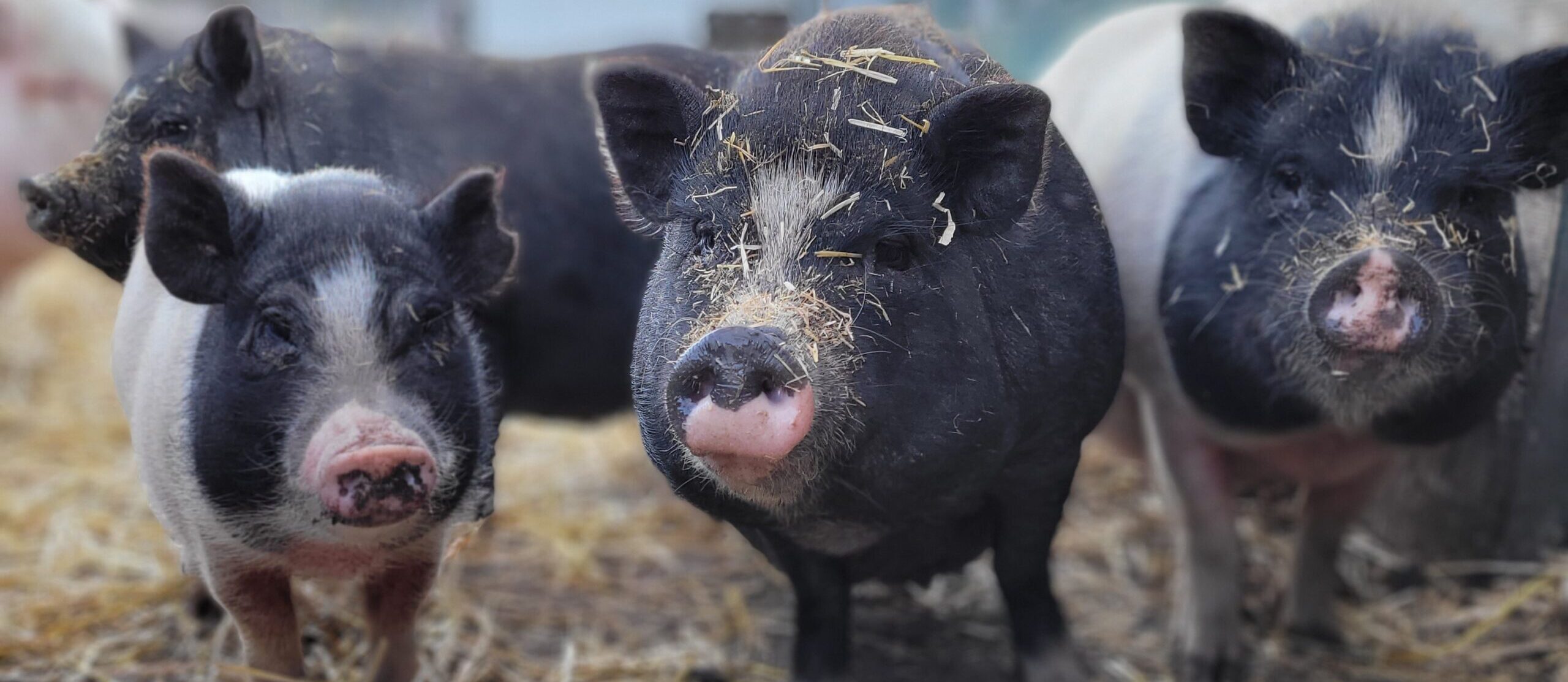
So, there you have it, mini pigs come in a whole bunch of colors. From the classic pink to black, white, and even spotted, these little guys are like a rainbow on four legs. It’s pretty cool how each one can be so different, right? Whether you’re thinking about getting one or just curious, knowing about their colors is just a small part of what makes them so interesting. At the end of the day, no matter the color, mini pigs are unique and adorable in their own special way. Who knew learning about pig colors could be so fun?
Frequently Asked Questions
What colors can mini pigs be?
Mini pigs can come in a variety of colors including black, white, gray, silver, and even spotted or brindle patterns.
Do mini pigs change color as they grow?
Yes, mini pigs can change color as they age. Some might lighten or darken over time.
Are certain mini pig colors more popular?
Some colors, like spotted or tri-color mini pigs, are often more popular because they are unique and eye-catching.
Does a mini pig’s color affect its health?
Generally, a mini pig’s color doesn’t affect its health, but lighter pigs may need more sun protection.
Can I breed mini pigs for specific colors?
Yes, breeding can be done to achieve specific colors, but it’s important to understand the genetics involved.
What should I consider when choosing a mini pig based on color?
Consider the care needs, like grooming and sun protection, that might come with certain colors, and choose a pig that you feel a connection with.
